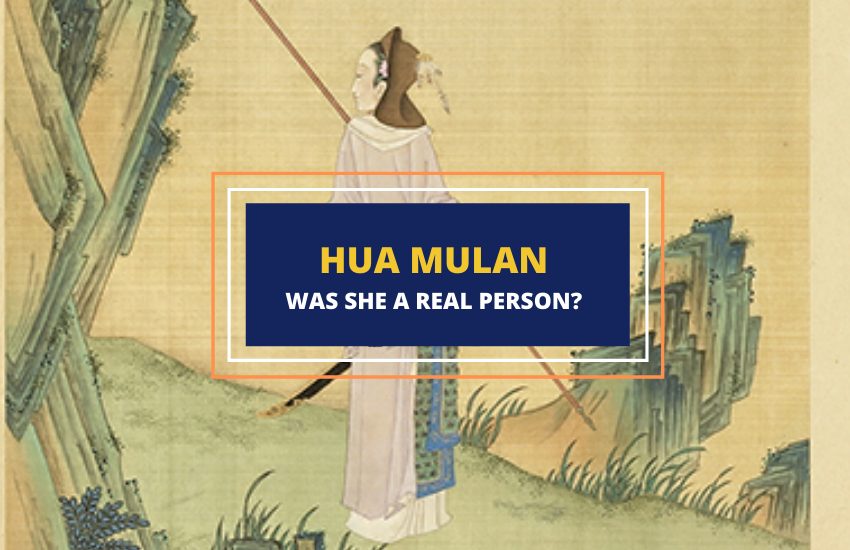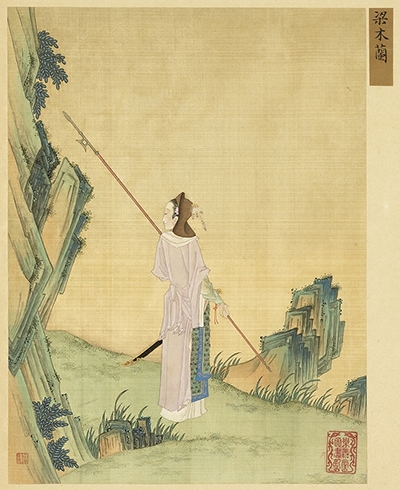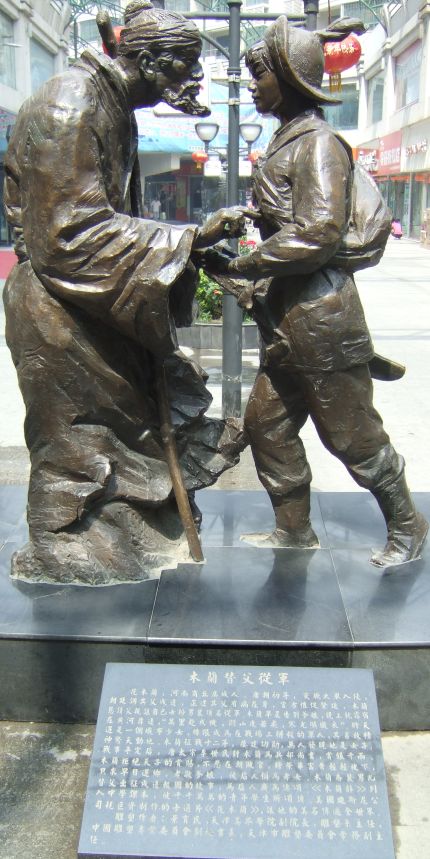
Table of Contents
The story of Mulan has been told and retold for centuries. It’s been featured in books and films, with the latest film of the same name featuring the heroine leading an army of men into battle against invaders.
But how much of this is fact and how much fiction?
We take a closer look at Hua Mulan, whether she was a real person or a fictional character, along with her complex origin and how her story has changed over time.
Who Was Hua Mulan?

There are many different stories about Hua Mulan, but most of them depict her as a brave warrior in China during the Northern and Southern dynasties.
Although she didn’t have a surname in the original story, Hua Mulan eventually became her known name. In the original tale, her father was called to battle and there were no sons in the family to take his place.
Unwilling to endanger her father’s life, Mulan disguised herself as a man and joined the army. After 12 years of war, she returned to her hometown along with her comrades, and revealed her identity as a woman.
In some versions, she became a leader among men who never discovered her true gender. Mulan also fought against the Chinese ban on women serving in the army.
The tale of Mulan has an enduring appeal because it narrates the journey of self-discovery and inspires women to defy traditional gender roles. She has become an embodiment of loyalty and filial piety in Chinese culture, as well as the symbol of a strong woman.
Is Hua Mulan a Historical Figure in China?

Scholars generally believe that Hua Mulan was a fictional character, but it’s also possible that she was a real person. Unfortunately, there’s no historical evidence to prove that she was a real person, as her story and character’s ethnic origins have significantly changed over time.
There’s no consensus on many aspects of Mulan’s story. For example, there are many possible locations of Mulan’s hometown. There’s an inscription on a memorial dedicated to Mulan in Hubei, which is believed to be her hometown. However, the historian Zhu Guozhen of the Ming dynasty noted that she was born in Bozhou. Still others mention Henan and Shanxi as her birthplaces. Modern historians argue that no archeological evidence can support any of these claims.
The Controversial Origin of Hua Mulan
The story of Hua Mulan originated in The Ballad of Mulan, a poem composed in the 5th century CE. Unfortunately, the original work no longer exists, and the text of the poem comes from another work known as the Yuefu Shiji, a collection of poems from the Han period to the early Tang period, compiled in the 12th century by Guo Maoqian.
The legend of Mulan became known during the time of the Northern (386 to 535 CE) and Southern Dynasties (420 to 589 CE), when China was divided between north and south. The rulers of Northern Wei dynasty were non-Han Chinese—they were the Tuoba clan of the Xianbei tribe who were proto-Mongol, proto-Turkic, or Xiongnu peoples.
The Tuoba conquest of northern China was of great historical significance, which explains why Mulan in the latest movie refers to the emperor as Khan—a title given to Mongol leaders—rather than the traditional Chinese title of Huangdi. It also reveals the ethnic origin of Hua Mulan, indicating that she’s likely a forgotten legacy of the Tuoba.
Researchers have found evidence that real female warriors of the 4th or 5th century CE inspired the tale of Mulan. In fact, ancient remains found in modern-day Mongolia imply that Xianbei women had strenuous activities like archery and horseback riding, which left marks on their bones. However, the remains don’t point specifically to a person who had the name Mulan.
The name Mulan can be traced back to its Touba origin as a masculine name, but in Chinese, it translates as magnolia. By the time of the Tang Dynasty, which spanned from 618 to 907 CE, Mulan began to be referred to as Han Chinese. Scholars conclude that her ethnic origin was influenced by Sinification, where non-Chinese societies were put under the influence of Chinese culture.
The Story of Hua Mulan Throughout History
The 5th-century poem The Ballad of Mulan narrates a simplified plot of the tale many are familiar with and has inspired countless film and stage adaptations throughout history. However, the legend was revised in succeeding eras to reflect the values of the time. Apart from the changing interpretations of Hua Mulan’s ethnic origins, the tale of the events has also changed over time.
In the Ming Dynasty
The original poem was dramatized in the play The Heroine Mulan Goes to War in Her Father’s Place, also known as The Female Mulan, by Xu Wei in 1593. Mulan became the heroine of the story, and the playwright called her Hua Mulan. Her assumed name was male, Hua Hu.
Since foot binding was a cultural practice during the late Ming period, the play also highlighted the tradition, even though it wasn’t mentioned in the original poem—the custom wasn’t practiced during the Northern Wei dynasty. In the first act of the play, Mulan is depicted unbinding her feet.
In the Qing Dynasty
In the 17th century historical novel Romance of Sui and Tang by Chu Renhuo, Mulan is portrayed as the daughter of a Turkish father and a Chinese mother. She’s also depicted as a heroine who resists a cruel tyrant and condemns imperialism. Unfortunately, her life ends tragically as circumstances force her to commit suicide.
In the 20th Century
Eventually, the legend of Hua Mulan was influenced by growing nationalism, especially during the Japanese occupation of China. In 1939, Mulan was depicted as a nationalist in the film Mulan Joins the Army, replacing the earlier virtue of filial piety with love for her country. In 1976, she was featured in Maxine Hong Kingston’s The Warrior Woman, but was renamed Fa Mu Lan.
Adaptations of The Ballad of Mulan include China’s Bravest Girl: The Legend of Hua Mu Lan (1993) and The Song of Mu Lan (1995). By 1998, the story reached legendary status in the West through Disney’s animated film Mulan. However, it featured the Westernized addition of the comical talking dragon Mushu and love interest Shang, even if the original poem doesn’t have these elements.
In the 21st Century
The latest Mulan film follows The Ballad of Mulan rather than the earlier Disney version. Like the original poem, Mulan joins the army, disguised as a man in place of her father, and fights against Rouran invaders instead of the Huns. The supernatural elements, like the speaking dragon Mushu, have been omitted.
The Tang dynasty was the inspiration for the Mulan film, which doesn’t align with the geographical and historical setting of the original poem set during the Northern Wei period. In the film, Mulan’s home is a tǔlóu—a structure used by Hakka people in southern China between the 13th to the 20th centuries.
FAQs About Hua Mulan
Modern versions of Mulan are based on the ancient Chinese folk tale about a legendary heroine. However, it’s likely that the folktale wasn’t based on a real person.
Mulan became a cavalry officer in the Chinese military.
Mulan is first mentioned in The Ballad of Mulan.
In Brief
One of the most legendary women of ancient China, Hua Mulan is based on the 5th-century The Ballad of Mulan that has been adapted for centuries. The debate remains ongoing whether Mulan was a real person or a historical figure. Real or not, the heroine continues to inspire us to make a change and fight for what is right.








